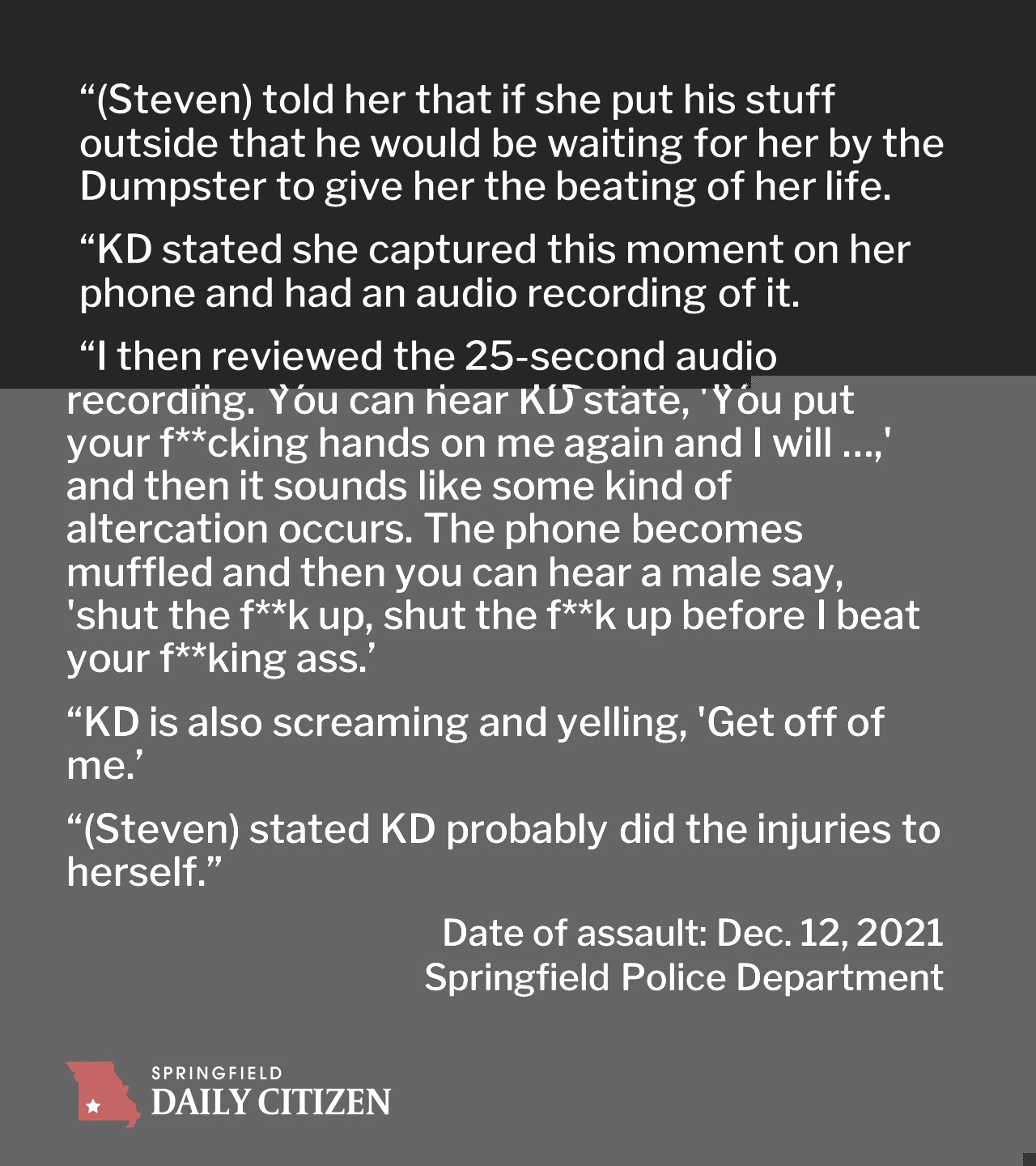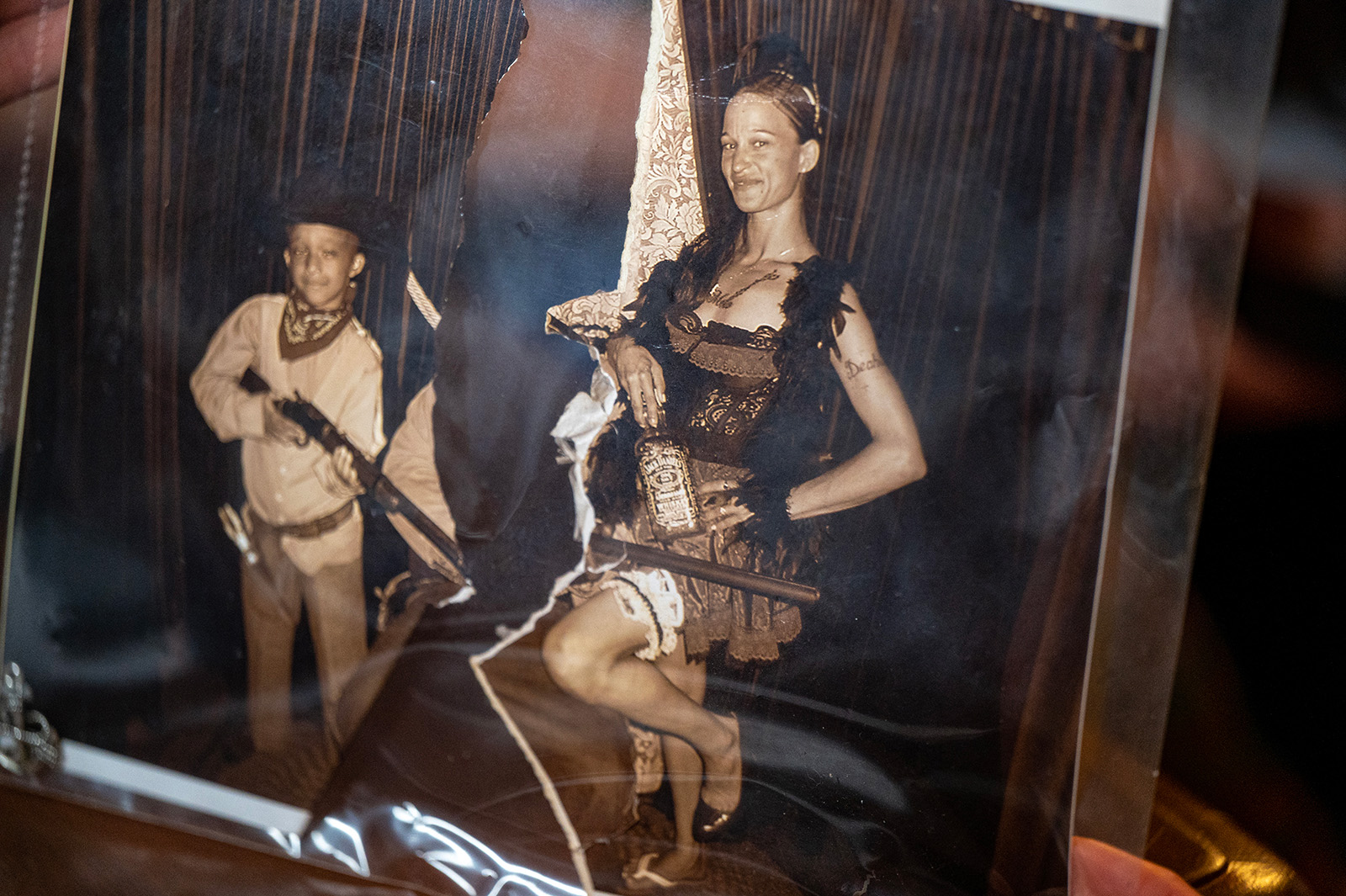In May and June, the Hauxeda published 29 stories on domestic violence in Greene County. The series was called Living in Fear.
Colleague Jackie Rehwald and I did the reporting. We worked closely; we conducted most of the more than 50 interviews together.
We talked often about ethical considerations, of which there were many in covering this complex, intimate topic.
Early on, before the first story was published, I looked at the National Coalition Against Domestic Violence website and found a link to a media guide on how to best cover the issue of domestic violence. I read it.
I re-read it with the idea of seeing how well we followed those guidelines.
Overall, I think we did well. We did OK even in areas where, in my opinion, the suggested guidelines run counter to long-held journalism values.
We tried to not inadvertently identify victims
One of our major decisions was to not name or identify those who have been abused unless they spoke to us and agreed to be named in a Hauxeda story.
You might think that's a simple task. It's not. Not when you consider the variety of ways a reporter can inadvertently identify a victim.
Jackie and I reviewed 150 probable cause statements, which are public records filed by police explaining why they believe someone broke the law. The ultimate decision on filing charges rests with Greene County Prosecuting Attorney's Office.
By law, the victim's name is redacted in court documents, along with their address and the names of any children who might have been present. Victims are identified by initials only. Their ages are not listed.
However, the defendant's name is not redacted. We realized that by naming the defendant many times, we were identifying the victim to their network of friends and relatives. The abuser and the abused often have the same last name.
To name the defendant is an important consideration when looking at probable cause statements. Many of the charges we looked at were later dropped, in large part because the person abused did not want to testify in court. Our concern was for victims who had already decided not to proceed for very personal and legitimate reasons.

In the excerpts we ran from the probable cause statements, we chose to use the defendant's first name, not the last name.
In one instance, we did the opposite because the defendant's first name was unique and the last name was common. We informed readers when we did this and why we did this.
We went to one court hearing because we wanted photos
Jackie attended a sentencing hearing and wrote a chilling, first-person account of the interpersonal dynamic between the abuser and abused.
Our decision to not name the defendant in this instance was difficult. We had not talked to the woman abused and we chose not to inadvertently identify her by identifying her abuser. Like many victims, she did not want to cooperate with prosecutors.
One of our considerations in this instance was that we had picked this particular case not because we had been reporting on it, but because we needed a photo of a domestic assault case in a court room.
Most of the photos in our series were portraits of seated sources. We needed something different. We needed court room photos. We happened to pick this case.
The photo we ran with Jackie's story showed only the defendant's eyes.

Yes, we would have liked to name him. Traditionally, news outlets name people involved in court proceedings. It holds us to greater accountability.
If I write a story and I don't name the witness, the defendant, the victim, and I screw up and get something wrong, there's a much greater chance no one will call to correct it because no one knows exactly who I'm talking about.
On the other hand, I also believe media outlets should not run names just to punish people, even criminals. Over the years, I've been urged by sources to put someone's name in a story simply for that purpose. Punishment is someone else's job.
We did run a different story in which we named all the victims. It was a summary of those killed by an intimate partner in recent years in Springfield.
Guideline: Put the domestic assault in context
The media guide states news reports too often focus on a specific incident, and fail to place it within a broader context of an established pattern of control and abuse.
I believe we provided that context. We reviewed how many offenders were repeatedly charged with domestic assault, yet never went to prison.
We created a database. We discovered that in 44 percent of the domestic assault cases we reviewed, prosecutors filed the lowest possible charge, a misdemeanor. Missouri has four types of domestic assault charges; the other three are more serious felonies.
Of the misdemeanor cases resolved by April 2023 — 43.9 percent of defendants received a suspended execution of sentence, meaning the defendants would do not go to jail if they abided by their probation rules.
About one in five (22.8 percent) of defendants received jail time or prison time at sentencing.

Jackie wrote a terrifying story on the murder of Torie Parrow, who was killed by her estranged husband on Oct. 31, 2018. He had just been released from jail. He killed her and then killed himself.

I wrote a story on the conflict between a woman abused by her husband, a lawyer, and the prosecutors who handled the case. In the end, Malea Klusmyer's ex-husband was found guilty of a misdemeanor, but not a felony.
Both of those stories provided a broad context of control and abuse.
Guideline: Acknowledge racism, misogyny, inequality
According to the media guide:
“Acknowledge the systems of racism, misogyny, and structural inequality that create a society where domestic violence is often tolerated and victims are routinely disbelieved and silenced, particularly victims who are already marginalized by these same structures.”
We gathered information on defendants charged with domestic assault in Greene County. A disproportionate percentage were Black relative to Greene County's overall population.
Jackie and I talked at length about what to do with that information.
Is it worth a story even if we can't explain why? What were the underlying causes? Could we even get to the underlying causes? Is the answer as simple as systemic racism?
We talked with Hauxeda CEO David Stoeffler and we wrote a story on what we were told by the best local sources we could find on the topic of domestic abuse in Black homes and the prosecution of African Americans.
Similarly, we wrote a story on how pastors can support domestic violence by relying heavily on Bible verses during counseling that advise wives to submit to their husbands.
No, we did not consider misogyny in our reporting
The media guide suggests we also consider “misogyny.”
We did not write a story on misogyny. None of our many sources mentioned that word.
We did publish a story on how family law in Missouri has increasingly placed more value on shared parenting without apparently considering how that fails to work in relationships where there has been long-standing domestic violence.
We talked to mothers who told us they stayed with their abuser because they believed they needed to do so to protect their children.
Male bias in lawmaking is not misogyny, in my opinion.
The media guide also suggests something that raises red flags with journalists:
“Reject the ‘two sides' myth. Domestic violence is a crime. If you are seeking the abuser’s perspective, do not frame it as ‘the other side' or a chance to ‘clear their name.' These narratives encourage the myths that domestic violence is often reported falsely, and that a victim’s testimony is ‘not enough evidence' when it is the most important evidence that a crime has occurred.
“Consider how other crimes are reported on, however, and compare it to a domestic violence story. Drunk drivers don’t get to mitigate their crimes because of impaired decision making — neither do abusers. Giving an abuser the opportunity to advance narratives like that can cause lasting harm to survivors.”
Maybe we “failed” on this one when we went to a meeting of men who had been ordered to attend a batterers intervention class. Four were ordered by a court to attend and one was there voluntarily.
We listened and reported on what the men and the instructor told us. That's what reporters do. One of the men there told us he believes he was wrongfully convicted.

I don't believe our story failed in our effort to write with accuracy, compassion and context on the issue of domestic violence.
In fact, the bigger conclusion from our overall reporting on batterers classes is that no individual or agency tracks how many defendants ordered to these classes actually complete them. No one tracks how often people who complete the class are charged again with domestic assault. No one could tell us if they work.
I will listen to other side of the story, but I'll also do my job and ask questions
After six months of reporting on domestic violence in Greene County, I assure you I did not come away with the conclusion domestic violence is often falsely reported.
If anything, it is grossly under-reported. Every day in Greene County, someone is assaulted by an intimate partner. It's a plague.
If a defendant charged with domestic assault calls me and wants to tell me the “other side of the story,” I will listen.
I'm also going to do my job as a reporter and ask them to explain — for example — the three prior domestic assault charges or the violation of several orders of protection. I will ask how, exactly, their intimate partner ended up in the emergency room with a concussion and fractured orbital socket.
Finally, the media guide for covering domestic violence also states:
“Accurate and fair journalism is essential to creating a more aware and compassionate culture for survivors of domestic violence.”
I think we did that. I know we certainly tried.
This is Pokin Around column No. 126.

